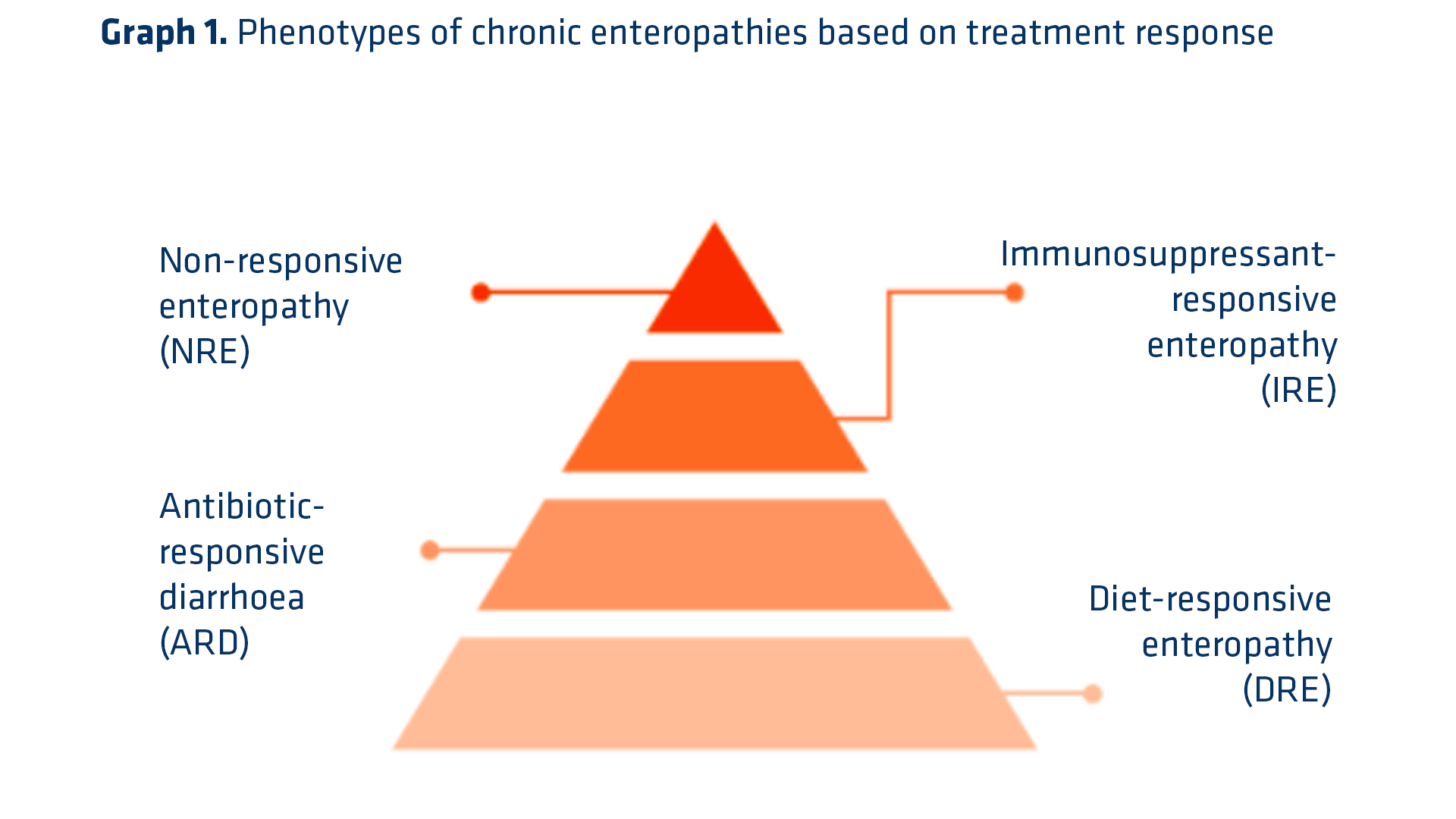Diarrhoea in dogs: when should and when shouldn’t antibiotics be used?
Diarrhoea in dogs
Antibiotic-responsive diarrhoea (ARD), classically known as small intestinal bacterial overgrowth (SIBO), is a problem that affects young dogs from large breeds. ARD is characterised by a symptomatic response to the administration of a range of antibiotics. This article reviews some commonly used antibiotics for the treatment of ARD.
Diarrhoea in dogs is one of the leading reasons for veterinary consultations. Antibiotic-responsive diarrhoea, classically known as (small intestinal bacterial overgrowth SIBO), is a problem that affects young dogs from large breeds. However, the condition has not been observed in small breed dogs or cats.(1)
Although the aetiology of ARD and exact mechanism of the response to antibiotics have not been determined, we do know that it is due to a state of dysbiosis rather than the overgrowth of a single bacterial species. (1)
ARD is characterised by a symptomatic response to the administration of a range of antibiotics. Dogs are asymptomatic during the treatment period, but they usually relapse days, weeks or months after treatment is withdrawn. (1)

Oxytetracycline, metronidazole and tylosin are considered the most effective antibiotics for the treatment of ARD. The choice of antibiotic should be based on availability, cost and impact on the development of antibiotic resistance.(1,2)
When the main aim is a rapid response, metronidazole is often used in combination, but tylosin, supplemented with a good quality diet, is also known to achieve good results.
A study published in the Journal of Veterinary Internal Medicine (1) reported several cases in which ARD responded exclusively to the use of tylosin. They called the condition tylosin-responsive diarrhoea (TRD). Below we review the mechanism of action of tylosin and its dosing regimen in the treatment of ARD.
Mechanism of action of tylosin
Tylosin is a member of the macrolide antibiotics, which reach high concentrations in the gastric mucosa, although it is metabolised in the liver and excreted in bile and urine. It is also used to treat pneumonia, haemorrhagic septicaemia and mastitis.
It has a bacteriostatic effect on a wide range of pathogens, including streptococci, staphylococci, diplococci, bacilli, Clostridia, mycoplasmas, Leptospira and chlamydia.
Tylosin acts on microorganisms in the process of replication, penetrating gram-positive bacteria with relative ease. In practice, it binds to the 50S ribosomal subunit with translocation of the aminoacyl-tRNA in sensitive microorganisms. Since it has a bacteriostatic effect, it does not actually kill the bacteria in the intestine, but it prevents them from growing and reproducing, thus helping the immune system to fight the infection.
A study recently published in the Veterinary Journal (3) reported another mechanism of action for tylosin in the treatment of diarrhoea in dogs. The researchers administered 25 mg/kg orally to 14 dogs daily for 7 days and then analysed the levels of potentially probiotic bacteria, such as Enterococcus spp. and lactic acid bacteria (LAB).
They found that the populations of both bacteria increased while the dogs were under treatment. This explains the remission of the clinical signs, since these bacteria help regulate other populations of the microflora, reduce the amount of free radicals in the intestine and also promote the generation of viral antibodies. In fact, it has been shown that the use of probiotics reduces the convalescence time for acute diarrhoea in dogs.
Diarrhoea in dogs: treating cases of ARD with tylosin
Dogs should take tylosin orally. It is generally well tolerated and does not cause any severe side effects, although some dogs may suffer:
- Loss of appetite
- An escalation of the diarrhoea, before it begins to subside
- False positives in lab tests or ALT and AST blood chemistry tests used to diagnose liver disorders
A study published in the Journal of Veterinary Internal Medicine (4) looked at the effects of tylosin and diet in 7 dogs who had been suffering from chronic diarrhoea for at least 30 days. Treatment consisted of 20 mg/kg of tylosin daily for 10 days. The researchers found that compared with the combinations of metronidazole and trimethoprim/sulfadiazine or doxycycline and prednisone, tylosin hardened stools more effectively.
Given that the diarrhoea returned 3 weeks after treatment was withdrawn, the researchers included a change from wet to dry diet and repeated the treatment with tylosin. After a 3 month follow-up period, they found that the combination of tylosin and diet was effective in controlling chronic diarrhoea in dogs.
Another study conducted at the Faculty of Veterinary Medicine of the University of Helsinki (5) looked at determining the ideal dose of tylosin to treat diarrhoea in dogs. They tested 15 dogs with TRD that had responded well to one dose of 25 mg/kg of tylosin per day for 7 days. After recurrence, one group received a dose of 5 mg/kg and another 15 mg/kg, always once daily for 7 days. The results showed that 93% of dogs that responded well to the first dose also responded well to the lowest dose for treating recurrences.